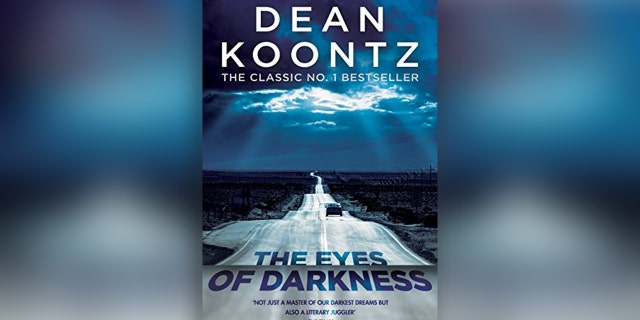Writing is on the communist wall: China isn't a good investment
Slow but steady disengagement with China will cost money in the short term but will likely pay off big in the long term.
A LONG AND INTERESTING DEEP BLOG POST on the coronavirus situation
In response to the above London Daily Mail headline, Bari Weiss of the New York Times asks: “So…@zerohedge was right?”
As this ZDNet article from February 3rd notes: ZeroHedge banned from Twitter over coronavirus bioweapon claims.
Will Twitter ban Tom Cotton also? Republican senator suggests ‘worse than Chernobyl’ coronavirus could’ve come from Chinese ‘superlaboratory.’
Modern Nostradamus:
A virus called Wuhan-400 makes people terribly ill … in a Dean Koontz thriller from 1981. How is it that some books appear to prophesy events? SCMP


CODA: Coronavirus: Did 1981 Dean Koontz book predict Wuhan outbreak?

Seven Winters after the Prague Spring of 1968
The Unbearable Lightness of Being.
I think somebody has already written that.
I did! But I was wrong about the title then. That title was supposed to belong to the novel I'm writing right now.- Milan Kundera
In spring of 1975, my faith and the faith of my family came under attack. I was sitting at the kitchen table with Tato having tea. Tato just made me laugh. No one could listen to Mamka's angry voice and roll his eyes as Tato could - upside down, inside out, back to front. 'Jozo, don't bring your dust into my kitchen!' Mamka said it in a voice reserved for talking about those who don't take their shoes off when
she just swept the carpet.
No matter how much or how often Tato was in trouble from women who cleaned the house for his habit of wiping the sawdust from his overalls on the kitchen floor his wide palms just kept rolling up and down his overalls out of habit. This would be the last time Mamka would ever nag him for bringing sawdust inside her clean kitchen.
... St Servac church overflowed with mourners who spilled out into the
autumn cool breeze. No song, just simple organ music began the service.
The sobbing started before the music but grew louder and stronger when
Farar Glatz approached Aga's coffin. The funeral march rubbed salt in a
wound that already hurts too much. Father Glatz, our neighbour and
friend, was supposed to lead us in prayer, but few people could follow
his voice scorched with grief. The funeral service was a blur to me. I
remember little of my Mamka's pain-clouded eyes or my Tato's shaking
hands. I was not aware of the world around me. I felt what a
transcendental force the air had after the service.
The “Butcher of Prague” prided himself on his ruthlessness and efficiency, but also on his fearlessness and contempt for normal security precautions: he would commute openly to his office as Acting Reich Protector of Bohemia and Moravia in Hradcany Castle, accompanied only by his driver, in an unarmored open-topped car and on a fixed route.
On May 27, 1942, two SOE operatives — the Czech Jan Kubis and the Slovak Josef Gabcik — lay in wait for him at the hairpin bend where they knew his car would have to slow down. Their assassination plan had the apt code name “Operation Anthropoid”.

FICTION HAS TO BE PLAUSIBLE. REALITY DOESN’T BOTHER: “The Devil’s Mercedes-Benz” found, and other details on Operation Anthropoid.
Activate This ‘Bracelet of Silence,’ and Alexa Can’t Eavesdrop 🙏The New York Times – “…Mr. Zhao and Ms. Zheng are computer science professors at the University of Chicago, and …with the help of an assistant professor, Pedro Lopes, they designed a piece of digital armor: a “bracelet of silence” that will jam the Echo or any other microphones in the vicinity from listening in on the wearer’s conversations. The bracelet is like an anti-smartwatch, both in its cyberpunk aesthetic and in its purpose of defeating technology. A large, somewhat ungainly white cuff with spiky transducers, the bracelet has 24 speakers that emit ultrasonic signals when the wearer turns it on. The sound is imperceptible to most ears, with the possible exception of young people and dogs, but nearby microphones will detect the high-frequency sound instead of other noises.
“It’s so easy to record these days,” Mr. Lopes said. “This is a useful defense. When you have something private to say, you can activate it in real time. When they play back the recording, the sound is going to be gone.”